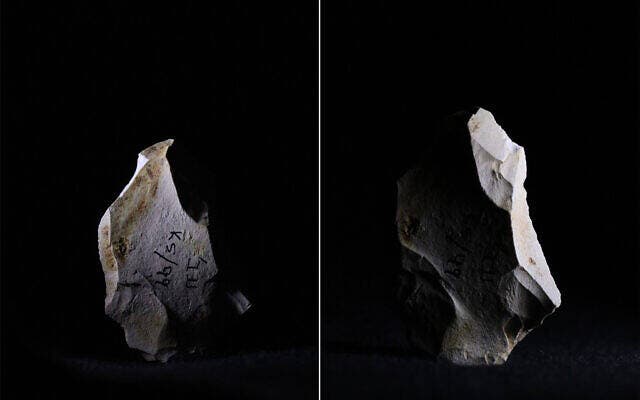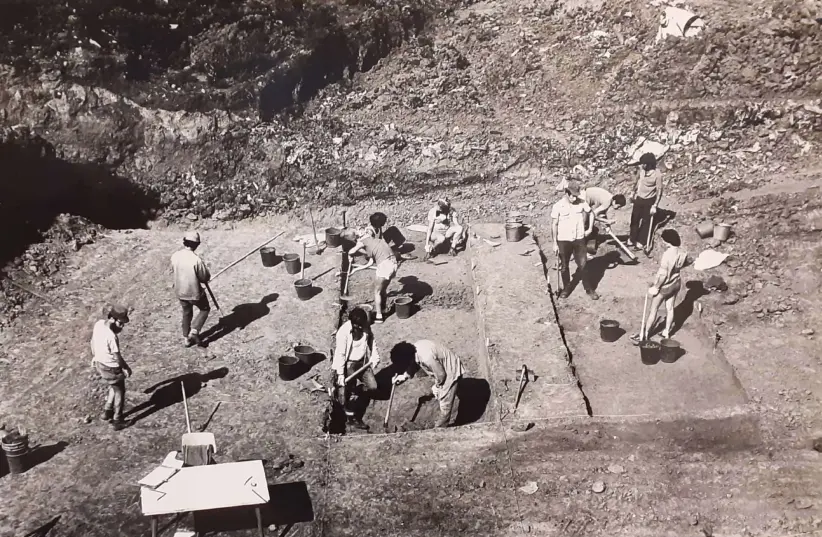
The discovery of controlled fire is a hallmark moment in the history of humanity, which opened up the floodgates of civilization. By making fire, early humans altered their own evolution, using this ability to stay warm, cook, ward off predators, and venture into increasingly harsher climates. Few inventions have been as consequential, but the exact timeline when this first happened is sketchy since ancient fire pits do not preserve easily.
The oldest unequivocal evidence for controlled fire was found at Israel’s Qesem Cave, dating back to 300,000 to 400,000 years ago, which means it could have been made by either Homo sapiens or Neanderthals. Now, researchers at the Weizmann Institute of Science in Israel, with a helping hand from a trusty AI, claim they’ve found evidence of burnt flint tools at the Evron Quarry archaeological site in Israel, dating from 800,000 to one million years ago.
“Fire is one of those things that makes humans who they are compared to other animals,” lead author and archaeology Ph.D. student Zane Stepka told the Jerusalem Post. “We depend on it today. [But] the question of when hominins first started with fire, what was it like taking a burning stick and using it, remains a mystery.”
Organic remains from fire, such as ash and charcoal, easily degrade over time until there is nothing left for archaeologists to find. It is thanks to perfectly synchronized sets of circumstances that scientists have been able to find any evidence of fire during the Paleolithic. There are only five confirmed sites across the world providing reliable evidence of ancient fire going back to 200,000 years ago or later.
But new analysis methods are revealing signs of ancient fire where traditional methods have failed or overlooked them entirely. By combining spectroscopy and a deep-learning AI, Dr. Filipe Natalio from Weizmann’s Plant and Environmental Sciences Department and Dr. Ido Azuri from Weizmann’s Life Core Facilities Department found evidence of the controlled burning of stone tools excavated in the Western Galilee’s Evron Quarry in the mid-1970s.

The stone tools were found alongside an array of animal fossils dating back between 800,000 and one million years ago, making it one of the oldest archaeological sites in Israel. However, when these artifacts and remains were first uncovered, archaeologists couldn’t find any evidence of fire or heat.
Previously, Dr. Natalio conducted research that showed heated stones undergo irreversible molecular change. So by employing Raman UV spectroscopy — a powerful chemical analysis technique which provides detailed information about the chemical structure, phase, crystallinity, and molecular interactions in a sample — it is possible to determine if a stone tool was exposed to fire. But that’s easier said than done since these molecular components created by heat can vary from one flint sample to another, and this variability is too complex for traditional data-analysis methods.
That’s where the AI came in, helping the researchers to unravel the tangled thread of complexity in the chemical data of the Evron Quarry stone tools.
The results revealed that the 26 flint tools included in the study had been subjected to heat exceeding 600°C (1112°F). Furthermore, they used the same method on 87 animal bones from the same site and found that the tusk of a now-extinct elephant also exhibited tell-tale molecular signs of burning with fire. This is extraordinary since it shows early humans in the region, perhaps Homo erectus or Homo habilis, were experimenting with burning different materials, and very likely used fire to cook the meat of their game.
“Now, we have million-year-old artifacts that we know were burnt, and that is something,” Stepka said. “There are theories, but no archaeological evidence of how fire was first made. That is something beautiful in archaeology. There will always be uncertainty. There is always the ‘maybe.’ It keeps us humble and open.”
Next, the researchers plan on using the same method on stone artifacts from earlier sites across the world, particularly those in Africa.
The findings appeared in the Proceedings of the National Academy of Sciences (PNAS).


